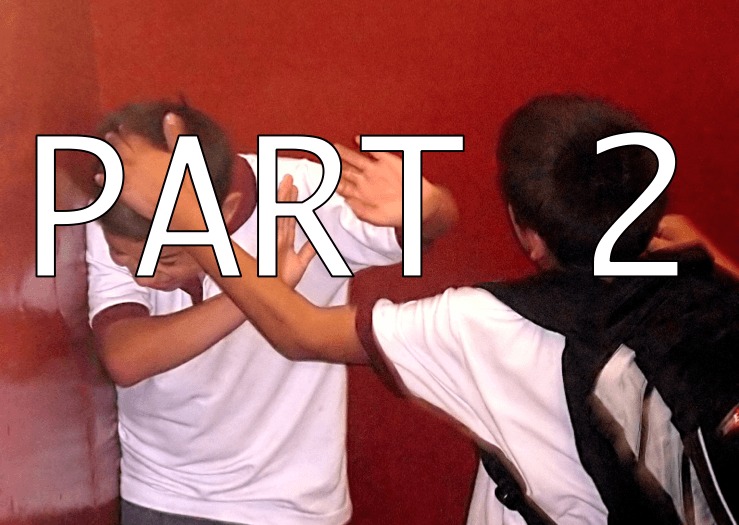Across Canada, bullying is a major problem and as such it has become a topic of serious discussion. However, for a practice that is so common and receiving such a great amount of attention, bullying remains a very misunderstood pattern of behaviour. Recently we had the opportunity to sit down with Lisa Dixon-Wells, the founder of bullying prevention group Dare to Care, and discuss the issue.
While part one of our series focused on the motivations and behaviours of the bullies themselves, part two focuses on the victims of bullying: who they are, want they want and how to help them.

The victims of bullies are….
- Lisa: ….those who become repeated victims of aggression tend to be quiet and shy in temperament. They tend not to retaliate or make any assertive responses to the initial aggression but instead react in non-verbal ways such as crying or frustration. The bully sees this as weakness and continues to repeatedly pick on them. People who become victims typically lack friends and social support at school or the workplace and they are often not confident in their physical abilities and strength.
While most victims do not do anything to provoke the victimization, there is a subgroup of victims who tend to show irritating and inappropriate social behaviour. These individuals tend to be impulsive and have poor social skills. These “provocative victims” often draw negative attention to themselves but it is not intentional or wanted. The harder they try to make friends or fit in, the more they seem to be rejected.
The victims of bullies want…
- Lisa: …to be accepted and to be given the same rights as everyone else. The right to learn, the right to speak their mind, the right to friendship and the right to be themselves without being laughed at.
The victims of bullies need…
- Lisa: …someone…anyone…to support them and stand up for them. They should not have to deal with bullying on their own.
The most common misconception regarding the victims of bullying is…
- Lisa: …that once a victim, always a victim. If we can give children the support they need and the skills they need to maneuver through an unfair world they will grow up to do just fine. Another misconception is that victims of bullying are primarily targeted because of physical appearances such as size or shape of body. While physical appearance can play a role, it is the individual’s reaction to bullying that is often the primary reason they are targeted in the first place. Bullies often seek out those that are easy to tear, quick to show frustration or easily angered.
The most important fact that the parents of victims must understand is…
- Lisa: ..bullying is a serious problem and not just something to be brushed off. Bullying is not a ‘right of passage’ that all kids must go through…that ‘right of passage’ is actually called peer conflict and is not remotely similar to the devastating impact that bullying has on victims. If a child reports that they are being bullied, we as adults must take it seriously. Listen to your child and take notes. If it is determined that the negative behaviour is occurring repeatedly, and not just once or twice, then the parent must work with the school to ensure that their child is safe. Parents must be their child’s advocate but they must also know the difference between what is typical peer conflict and when conflict has escalated into bullying.
I know my child is a victim of bullying when…
- Lisa: …this is a much harder question to answer. If children would just tell us what is going on in their life, we could intervene much quicker. Unfortunately, children who are bullied often put on a mask of happiness as if everything is fine in their world. They may give us subtle cues but as busy adults we often miss out on these cries for help. In order to know if your child is being bullied, you must open up the lines of communication. Make it an o.k. topic to talk about…share your own stories of being bullied or having witnessed bullying. Children, like adults, feel ashamed that they are being victimized. By sharing our own stories, we take away that shame and allow children to be more honest and open with us.
The most effective way for a victim to stand up to their bully is…
- Lisa: …by learning and practicing non-reactive strategies. It is critical that victims not give their bully the pleasure of knowing that they are upset or frustrated. By teaching our children not to react we are taking the ‘thrill’ out of the mean-spirited behaviour of the bully. To be clear, we can’t just tell our children to go ask for help, stand up for themselves, or walk away. We must show them how these skills are done and then give them ample opportunity to practice.
——
Theodore Wiebe is a writer living in Calgary. You can follow more of his important nonsense on Twitter (@TheodoreWiebe) or Tumblr (writingafterdark.tumblr.com).
Follow us on Twitter @SpectatorTrib
